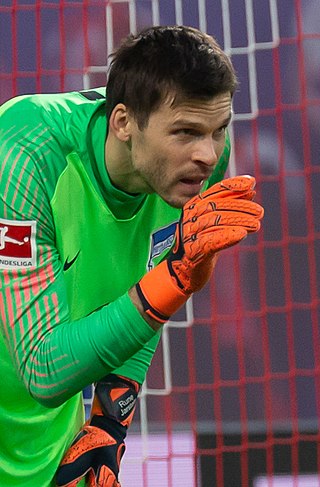Related Research Articles

The Cirth is a semi‑artificial script, based on real‑life runic alphabets, one of several scripts invented by J. R. R. Tolkien for the constructed languages he devised and used in his works. Cirth is written with a capital letter when referring to the writing system; the letters themselves can be called cirth.
RuneScape is a fantasy massively multiplayer online role-playing game (MMORPG) developed and published by Jagex, released in January 2001. RuneScape was originally a browser game built with the Java programming language; it was largely replaced by a standalone C++ client in 2016. The game has had over 300 million accounts created and was recognised by the Guinness World Records as the largest and most-updated free MMORPG.
Jagex Limited is a British video game developer and publisher based at the Cambridge Science Park in Cambridge, England. It is best known for RuneScape and Old School RuneScape, both free-to-play massively multiplayer online role-playing games. The company's name is derived from the company's original slogan, "Java Gaming Experts".

A rune is a letter in a set of related alphabets known as runic alphabets native to the Germanic peoples. Runes were used to write Germanic languages before they adopted the Latin alphabet, and for specialised purposes thereafter. In addition to representing a sound value, runes can be used to represent the concepts after which they are named (ideographs). Scholars refer to instances of the latter as Begriffsrunen. The Scandinavian variants are also known as fuþark, or futhark, these names derived from the first six letters of the script, ⟨ᚠ⟩, ⟨ᚢ⟩, ⟨ᚦ⟩, ⟨ᚨ⟩/⟨ᚬ⟩, ⟨ᚱ⟩, and ⟨ᚲ⟩/⟨ᚴ⟩, corresponding to the Latin letters ⟨f⟩, ⟨u⟩, ⟨þ⟩/⟨th⟩, ⟨a⟩, ⟨r⟩, and ⟨k⟩. The Anglo-Saxon variant is futhorc, or fuþorc, due to changes in Old English of the sounds represented by the fourth letter, ⟨ᚨ⟩/⟨ᚩ⟩.
The Younger Futhark, also called Scandinavian runes, is a runic alphabet and a reduced form of the Elder Futhark, with only 16 characters, in use from about the 9th century, after a "transitional period" during the 7th and 8th centuries. The reduction, somewhat paradoxically, happened at the same time as phonetic changes that led to a greater number of different phonemes in the spoken language, when Proto-Norse evolved into Old Norse. Also, the writing custom avoided carving the same rune consecutively for the same sound, so the spoken distinction between long and short vowels was lost in writing. Thus, the language included distinct sounds and minimal pairs that were written the same.

The Elder Futhark, also known as the Older Futhark, Old Futhark, or Germanic Futhark, is the oldest form of the runic alphabets. It was a writing system used by Germanic peoples for Northwest Germanic dialects in the Migration Period. Inscriptions are found on artifacts including jewelry, amulets, plateware, tools, and weapons, as well as runestones, from the 1st to the 9th centuries.

Anglo-Saxon runes or Anglo-Frisian runes are runes that were used by the Anglo-Saxons and Medieval Frisians as an alphabet in their native writing system, recording both Old English and Old Frisian. Today, the characters are known collectively as the futhorc from the sound values of the first six runes. The futhorc was a development from the older co-Germanic 24-character runic alphabet, known today as Elder Futhark, expanding to 28 characters in its older form and up to 34 characters in its younger form. In contemporary Scandinavia, the Older Futhark developed into a shorter 16-character alphabet, today simply called Younger Futhark.

Rune Bratseth is a Norwegian former professional footballer who played as a libero.
Rune Skarsfjord is a Norwegian football coach and former player. He worked as head coach for FK Haugesund and as an assistant coach for Rosenborg BK. He was promoted to head coach of SK Brann in 2010 after Steinar Nilsen was dismissed.

Cipher runes, or cryptic runes, are the cryptographical replacement of the letters of the runic alphabet.
The Kniksen Award, established in 1990, honors the best players in the Norwegian football premiership. The award is named after the legendary Norwegian football player Roald Jensen, nicknamed "Kniksen".
Rune Pedersen is a former football referee, representing SK Sprint-Jeløy. He was regarded as the best match official in Norway during the 1990s, and won the Kniksen award for "Referee of the year" 10 times between 1990 and 2000. In 1993 Roy Helge Olsen prevented Pedersen from 10 consecutive wins.

Rune Almenning Jarstein is a Norwegian professional footballer who plays as a goalkeeper for Herkules.

There is some evidence that, in addition to being a writing system, runes historically served purposes of magic. This is the case from the earliest epigraphic evidence of the Roman to the Germanic Iron Age, with non-linguistic inscriptions and the alu word. An erilaz appears to have been a person versed in runes, including their magic applications.
Rune is a unisex, though predominantly masculine given name derived from the Old Norse word rún, meaning "secret". It is earliest attested in a runestone as runi. It is a common name in Norway, Sweden, Denmark, and popular in Belgium, where it ranked in top thirty names for baby boys in 2006 and was the tenth most popular name for boys in 2006 in the Flemish Region of Belgium. Rúni, a variant of the name, was among the ten most popular names given to baby boys in the Faroe Islands, Denmark, in 2007. In the United States, Rune is a much less common name- in 2021 there were only 35 baby boys and only 9 baby girls named Rune. Notable people with the name include:

The medieval runes, or the futhork, was a Scandinavian runic alphabet that evolved from the Younger Futhark after the introduction of stung runes at the end of the Viking Age. These stung runes were regular runes with the addition of either a dot diacritic or bar diacritic to indicate that the rune stood for one of its secondary sounds. The medieval futhork was fully formed in the early 13th century. Due to the expansion of its character inventory, it was essentially possible to have each character in an inscription correspond to only one phoneme, something which was virtually impossible in Younger Futhark with its small inventory of 16 runes.

The Dalecarlian runes, or dalrunes, was a late version of the runic script that was in use in the Swedish province of Dalarna until the 20th century. The province has consequently been called the "last stronghold of the Germanic script".

Karl Rune Valerius Bergström was a Swedish football player who competed in the 1920 Summer Olympics. In the 1920 tournament he was a part of the Swedish football team that finished in 5th place. He won a total of 26 caps and scored five goals for the Sweden national team.

Holger Vitus Nødskov Rune is a Danish professional tennis player. He has been ranked as high as world No. 4 in men's singles by the Association of Tennis Professionals (ATP), making him the highest-ranked male Danish player in the history of the ATP rankings. Rune has won four ATP Tour singles titles, including a Masters 1000 title at the 2022 Paris Masters, and produced his best Grand Slam performance at the 2022 French Open by reaching the quarterfinals in his main draw debut at the tournament.

Gösta Elof Rune Wenzel was a Swedish footballer. He represented GAIS and IFK Göteborg during a career that spanned between 1918 and 1932, winning three Swedish Championships with the former. He played in 30 matches for the Sweden men's national football team from 1919 to 1930. He was also part of Sweden's squad for the football tournament at the 1920 Summer Olympics, but he did not play in any matches.
References
- 1 2 Rune Frantsen at WorldFootball.net
- ↑ Rune Frantsen at Soccerway